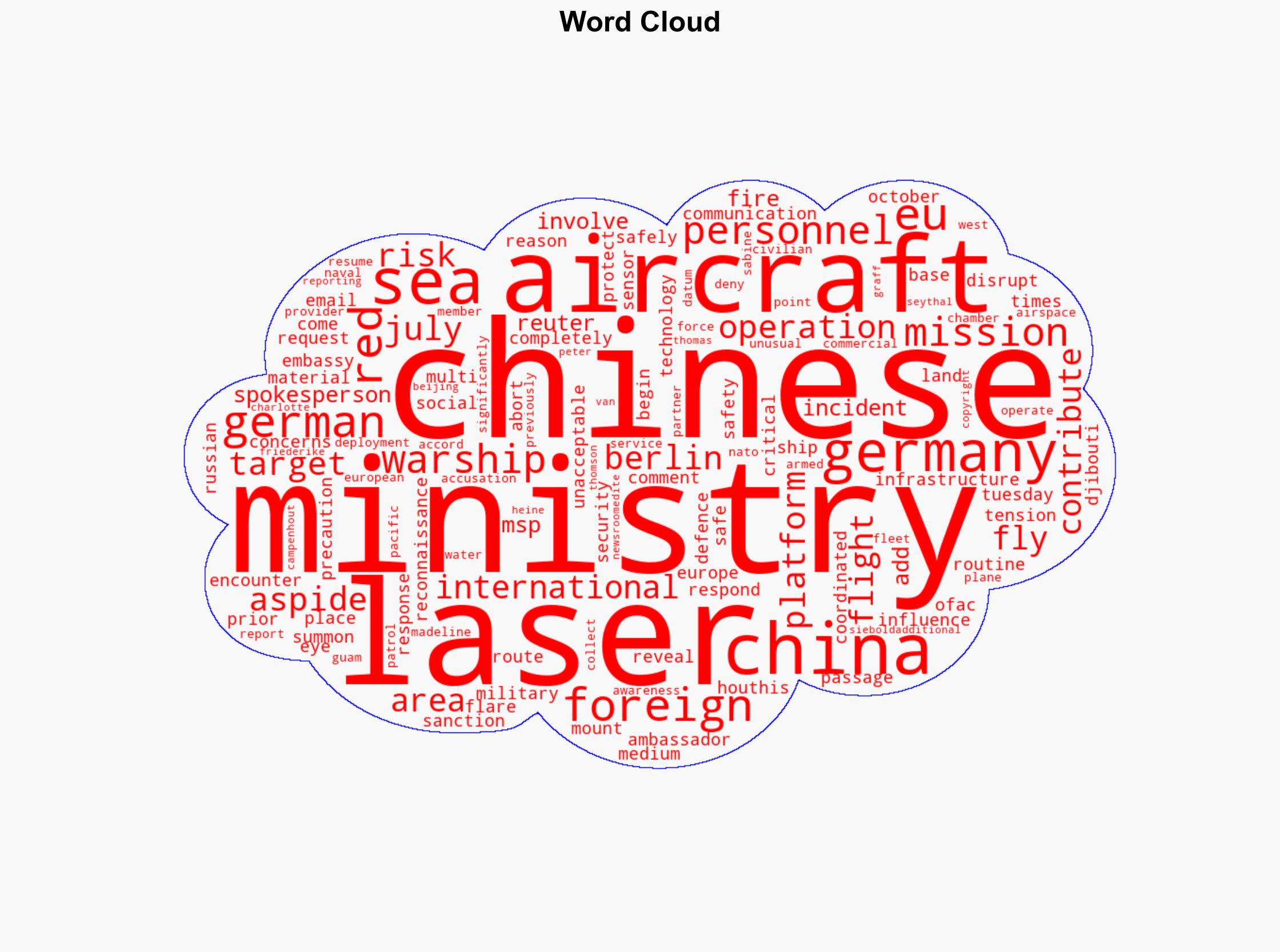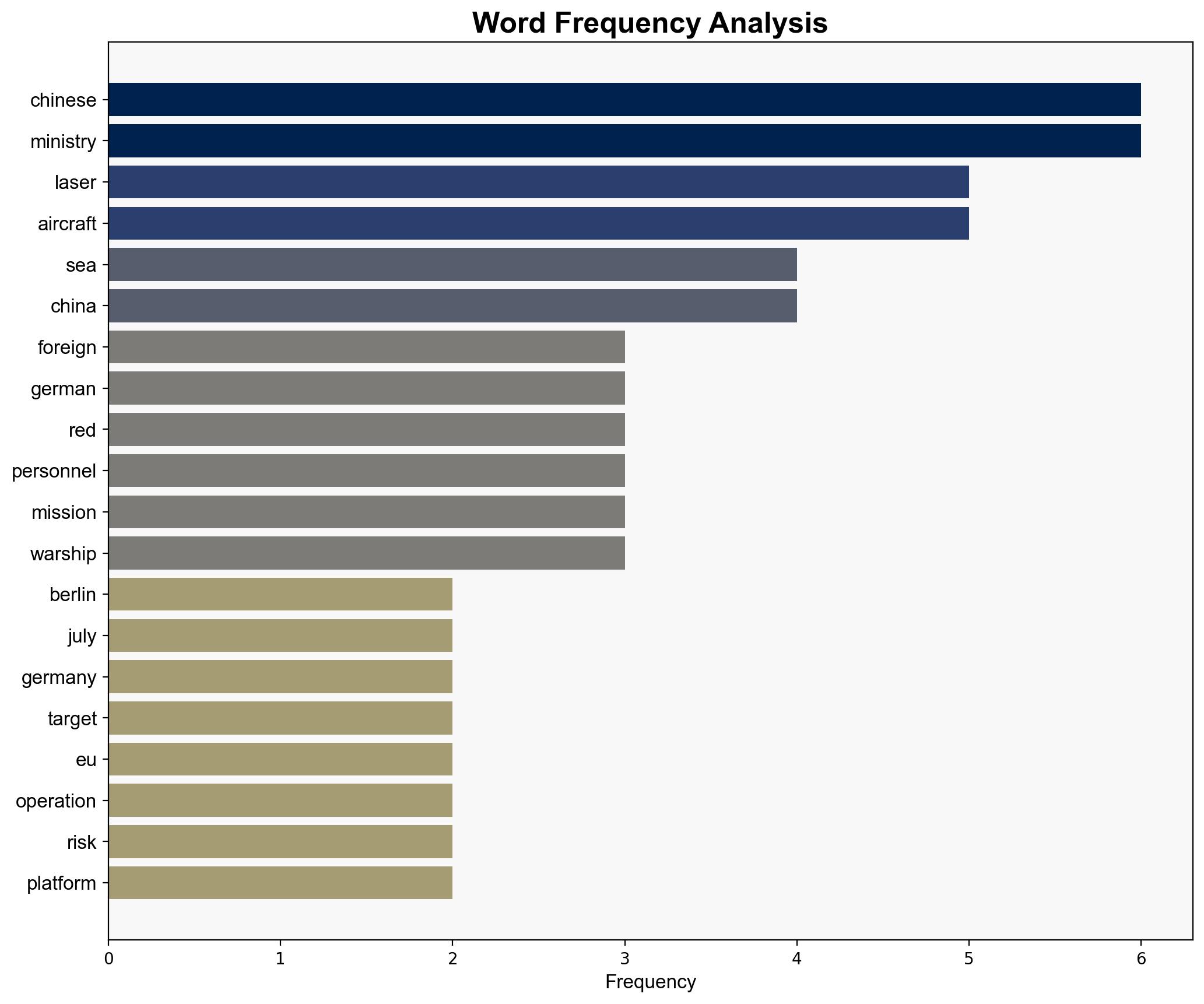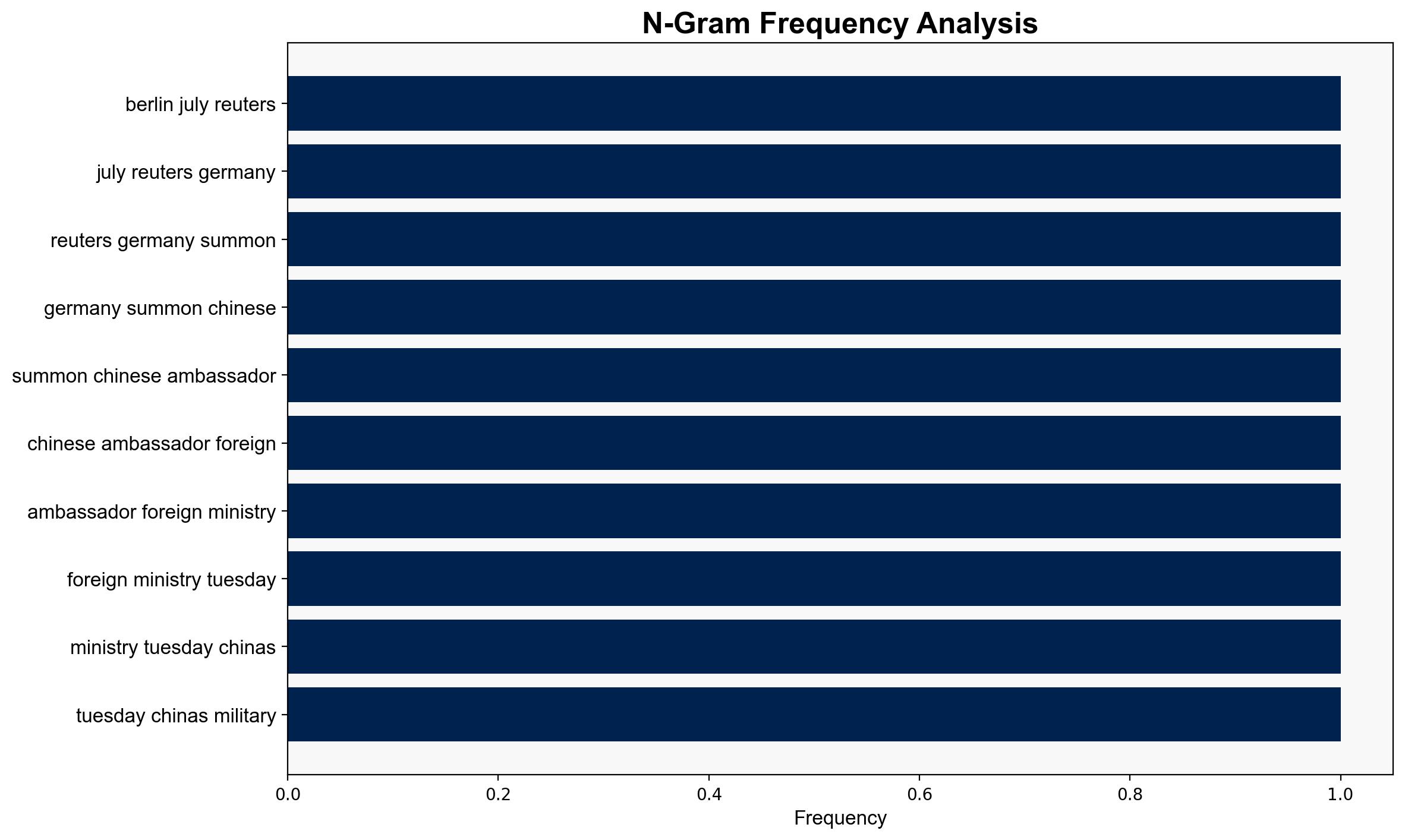Germany Accuses China of Laser Targeting Aircraft in EUs Red Sea Mission – gcaptain.com
Published on: 2025-07-08
Intelligence Report: Germany Accuses China of Laser Targeting Aircraft in EUs Red Sea Mission – gcaptain.com
1. BLUF (Bottom Line Up Front)
Germany has accused China of targeting a German aircraft with a military-grade laser during an EU mission in the Red Sea. This incident raises significant concerns about China’s military activities in international waters and the potential risks to EU operations. Immediate diplomatic engagement and strategic reassessment of EU-China relations are recommended.
2. Detailed Analysis
The following structured analytic techniques have been applied to ensure methodological consistency:
Causal Layered Analysis (CLA)
The surface event involves China’s alleged laser targeting of a German aircraft. Systemic structures include China’s increasing military presence in international waters. The worldview reflects China’s assertive foreign policy, while myths pertain to China’s perceived regional dominance.
Cross-Impact Simulation
The incident could strain EU-China relations, impact regional security dynamics, and influence EU’s strategic posture in the Red Sea and beyond.
Scenario Generation
Scenarios range from diplomatic resolution and strengthened EU-China cooperation to heightened tensions and increased military posturing by EU states.
Narrative Pattern Analysis
China’s narrative of peaceful rise contrasts with actions perceived as aggressive, affecting global perceptions and alliances.
3. Implications and Strategic Risks
The incident highlights vulnerabilities in EU’s operational security and the potential for escalation in international waters. It underscores the need for enhanced surveillance and diplomatic channels to manage such conflicts. The risk of miscalculation or unintended escalation remains high.
4. Recommendations and Outlook
- Enhance EU’s maritime surveillance and defense capabilities in the Red Sea region.
- Engage in diplomatic dialogue with China to address and de-escalate the situation.
- Develop contingency plans for potential future incidents, including best case (diplomatic resolution), worst case (military confrontation), and most likely (ongoing tensions with intermittent incidents).
5. Key Individuals and Entities
Madeline Chambers, Sabine Siebold, Friederike Heine, Charlotte Van Campenhout, Thomas Seythal, Peter Graff.
6. Thematic Tags
national security threats, cybersecurity, counter-terrorism, regional focus





